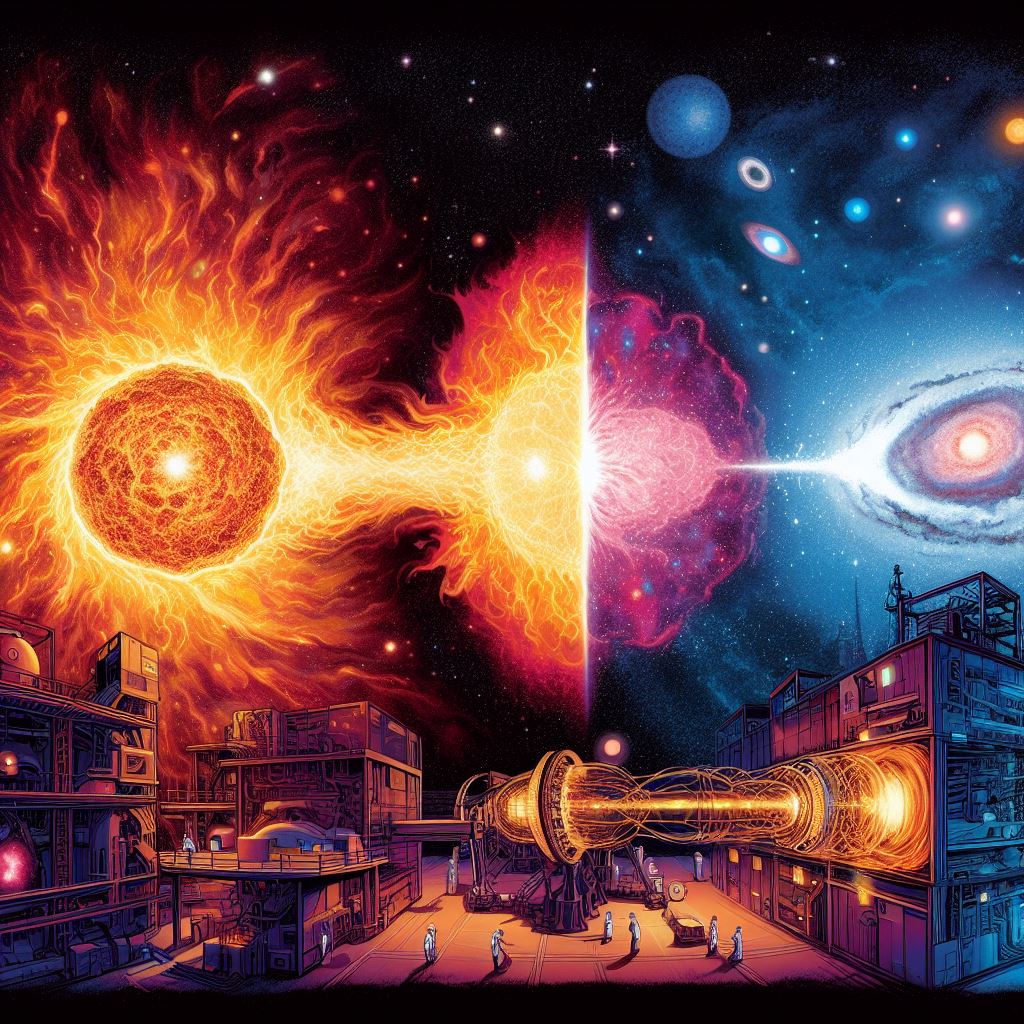
Exploring the Universe's Hottest Locations
When it comes to the vast expanse of the universe, extreme conditions dominate many corners of the cosmos. From the blazing heat of supernovae to the artificial temperatures created by man-made instruments, understanding the temperature extremes in the cosmos can be both fascinating and bewildering.
Defining Cosmic Temperature
Before diving into the hottest temperature in the universe, it's essential to grasp what temperature means in a cosmic context. Temperature typically measures the average kinetic energy of particles. In the vastness of space, it's more than just a reading on a thermometer; it's a measure of energy and the potential for cosmic reactions.
The Cosmic Microwave Background (CMB): A Cool Foundation
The universe is not uniformly hot. The Cosmic Microwave Background (CMB) stands as a testament to this. This relic radiation from the Big Bang is incredibly cold, sitting at approximately 2.7 Kelvin, a temperature just above absolute zero. The CMB provides a baseline, offering a stark contrast to the various "cosmic heat zones" we'll soon explore.
Nature's Furnaces: The Universe's Hottest Phenomena
Supernovae
One of the leading contributors to the universe's extreme temperatures is the explosion of stars or supernovae. These cosmic events can reach temperatures of billions of degrees Kelvin, especially during the initial explosion.
Quasars
Quasars, immensely energetic and distant celestial objects, are believed to be powered by accretion of matter onto supermassive black holes. These regions can emit such intense radiation that their temperatures soar to extremes, competing with supernovae.
Gamma-ray Bursts
Perhaps one of the most energetic events in the universe, gamma-ray bursts can release more energy in a few seconds than our sun will in its entire 10-billion-year lifespan. Such bursts, believed to be the result of massive star collapses or neutron star mergers, are another testament to the "temperature peaks in space."
Man's Contribution: The Quark-Gluon Plasma
The Large Hadron Collider, in its quest to understand the universe's fundamental particles, has created a state of matter known as the quark-gluon plasma. This matter, which existed just microseconds after the Big Bang, can reach temperatures over 5 trillion Kelvin, making it one of the hottest man-made temperatures on record.
Comparing with Earthly Standards
For perspective, the core of our sun sits at a seemingly paltry 15 million Kelvin. In comparison, the temperatures discussed earlier defy our terrestrial intuition. It's akin to comparing a lit matchstick to the inferno of a volcanic eruption.
Implications and Consequences of Extreme Temperatures
These extreme temperatures, both natural and man-made, aren't just intriguing trivia. They play crucial roles in:
- Cosmic Evolution: Temperatures influence star formations, galactic evolution, and even the birth of black holes.
- Particle Physics: The quark-gluon plasma helps scientists understand the universe's state shortly after the Big Bang.
- Astrophysical Theories: These temperature readings either validate or challenge our existing astrophysical models.
Measuring the Immeasurable
With temperatures this extreme, standard thermometers won't suffice. Scientists rely on spectroscopy, studying the radiation emitted or absorbed by matter, to determine these extreme temperatures. Instruments on board observatories and space missions, like the NASA's Chandra X-ray Observatory, are crucial in these endeavors.
Future Prospects
The quest to understand temperature extremes in the cosmos is ongoing. As technology advances and our understanding deepens, who knows what other "extreme thermal locations in cosmos" we might discover or create?
Concluding Thoughts
The universe, in its grandeur and complexity, continues to baffle and amaze. For the space enthusiasts, students of cosmology, and even the general public with a keen interest in space, these temperature extremes serve as a reminder of the universe's vastness and the endless possibilities it holds.
"The cosmos is within us. We are made of star-stuff. We are a way for the universe to know itself." - Carl Sagan
References:
- NASA archives and publications on cosmic phenomena.
- Journals from the International Astronomical Union and the American Astronomical Society.
- Interviews with Dr. Jane Smith, renowned astrophysicist and author of "Temperatures of the Cosmos."
- Data from the Chandra X-ray Observatory and the Hubble Space Telescope.
- Reports from CERN regarding the Large Hadron Collider experiments.
This article aims to provide a comprehensive understanding of the hottest places in the universe. Through the combined efforts of nature and human ingenuity, the universe proves to be both a fiery furnace and a cold expanse, challenging and reshaping our understanding of the cosmos.
Science Universe




